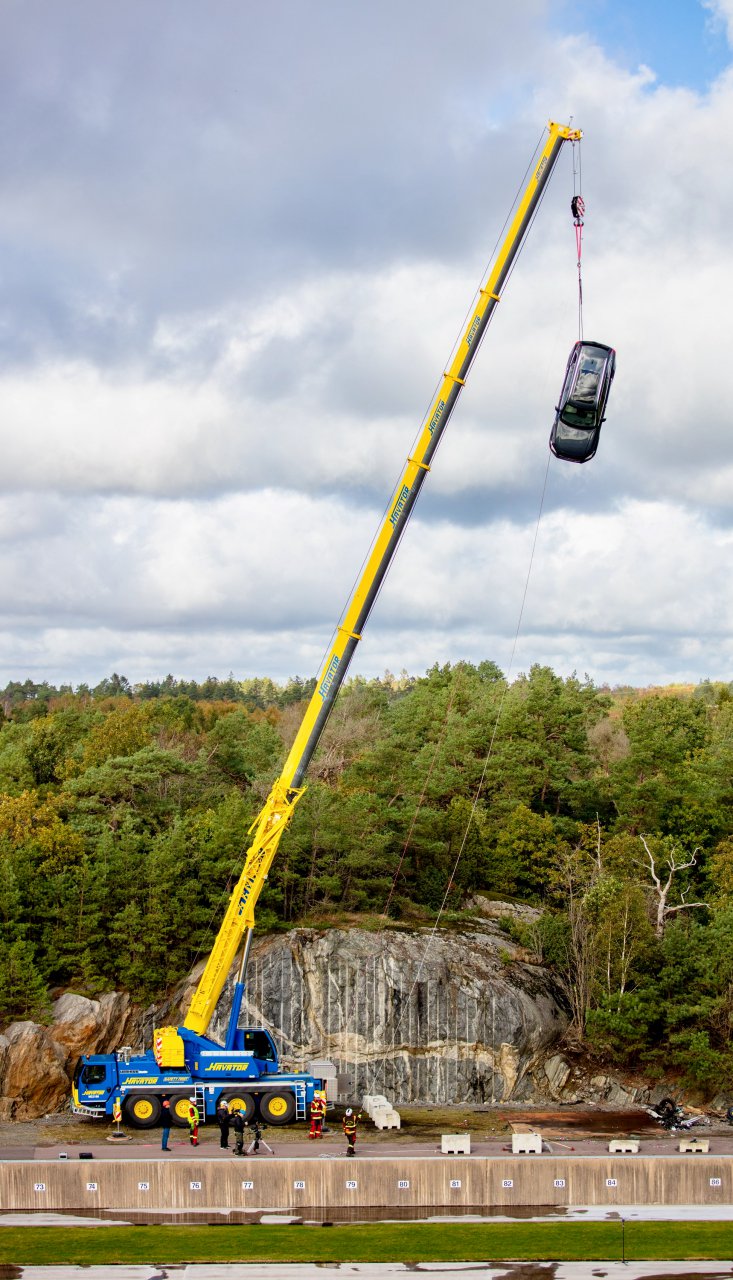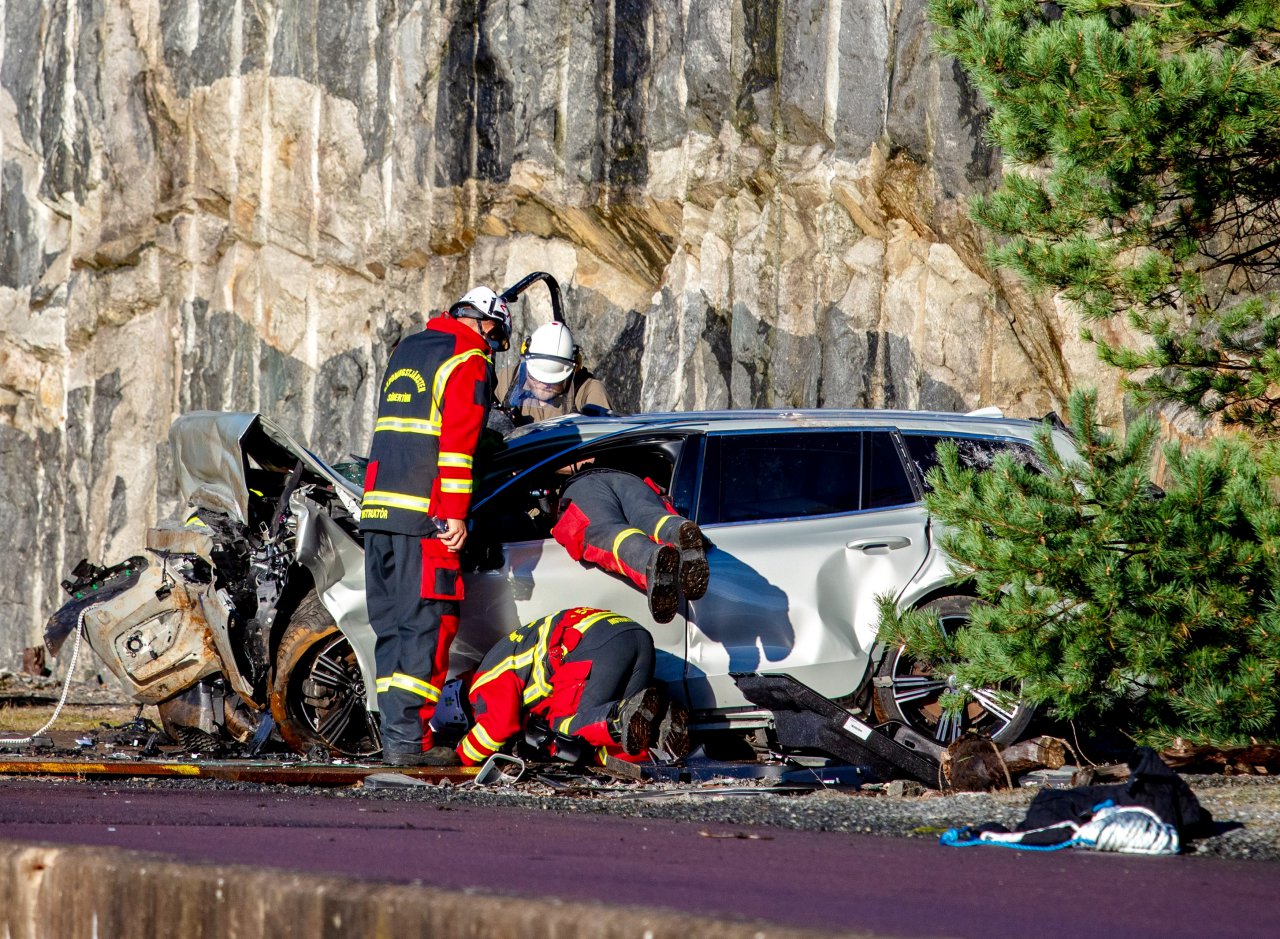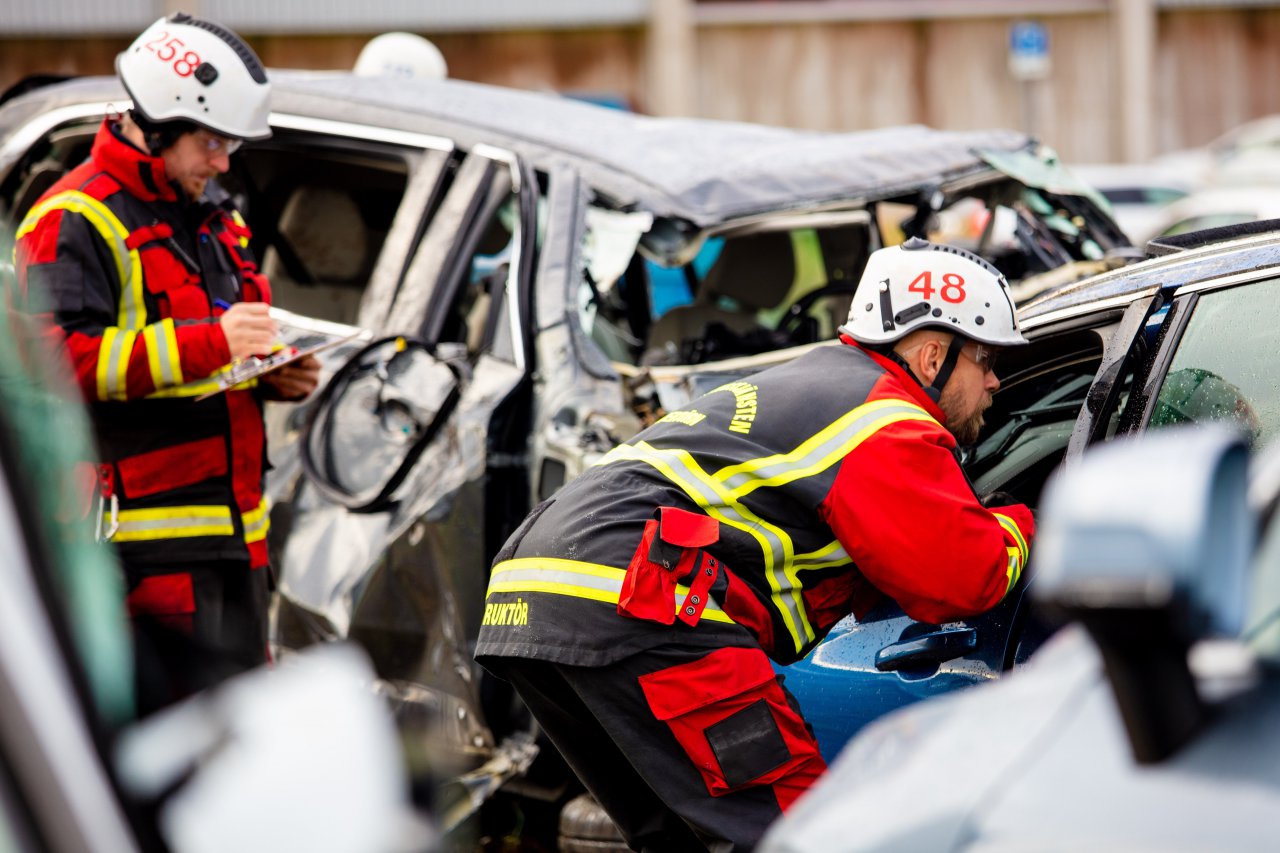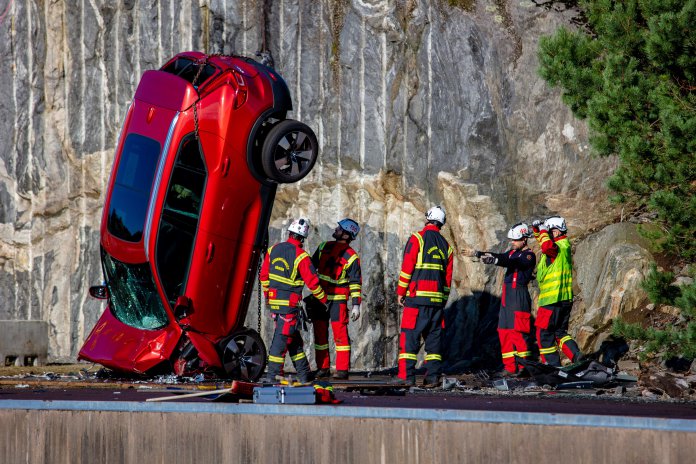In what Volvo Cars calls “the most extreme crash test” it has ever done, 10 cars drop from a height of 30 meters (nearly 100 feet) so emergency responders could hone their skills in extracting passengers more quickly and safely.
A crane lifted each car at the Volvo Cars Safety Center in Sweden, where they plunged to the ground to simulate “any possible crash scenario and to simulate the forces that erupt in the most extreme crashes, beyond what can be simulated with ordinary crash testing.”
“Think of single-car accidents at very high speed, accidents whereby a car hits a truck at high speed, or accidents whereby a car takes a severe hit from the side,” Volvo suggested. “In such situations, people inside the car are likely to be in a critical condition. Therefore, the priority is to get people out of the car and to a hospital as quickly as possible, using hydraulic rescue tools known in the industry as the ‘jaws of life.’”
“Extrication specialists often talk about the golden hour: they need to release and get a patient to the hospital within one hour after the accident has happened.”
The cars used in the crane test were of various models so rescue workers could have experience with different vehicle architectures.
“We have been working closely together with the Swedish rescue services for many years,” said Håkan Gustafson, a senior investigator with the Volvo Cars Traffic Accident Research Team. “That is because we have the same goal: to have safer roads for all. We hope no one ever needs to experience the most severe accidents, but not all accidents can be avoided. So it is vital there are methods to help save lives when the most severe accidents do happen.”



Findings from the crashes and extrication procedures will be made available free to rescue workers around the world, Volvo said.
“Usually, rescue workers get their training vehicles from scrapyards. But these cars are often up to two decades old. And in terms of steel strength, safety cage construction and overall durability, there is a vast difference between modern cars and those built 15 to 20 years ago. And new Volvos are made of some of the hardest steel found in modern cars.
“This makes it crucial for rescue workers to constantly update their familiarity with newer car models and review their processes in order to develop new extrication techniques. In other words, these training sessions can mean the difference between life and death.”






That’s only about 54 mph at impact.
Impact into the earth surface ( maybe rock?) is exactly how much more severe than 54 mph into a concrete barrier? I should think it is not more severe, just maybe more dramatic! Good for later use in advertisements?